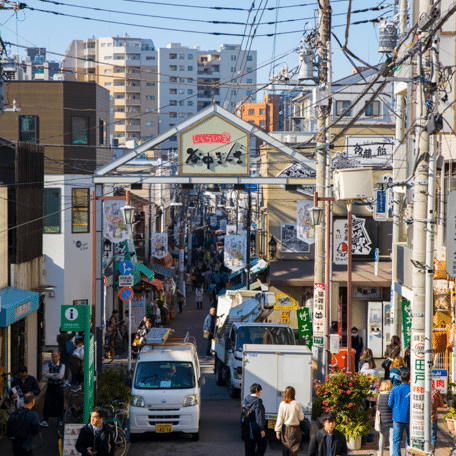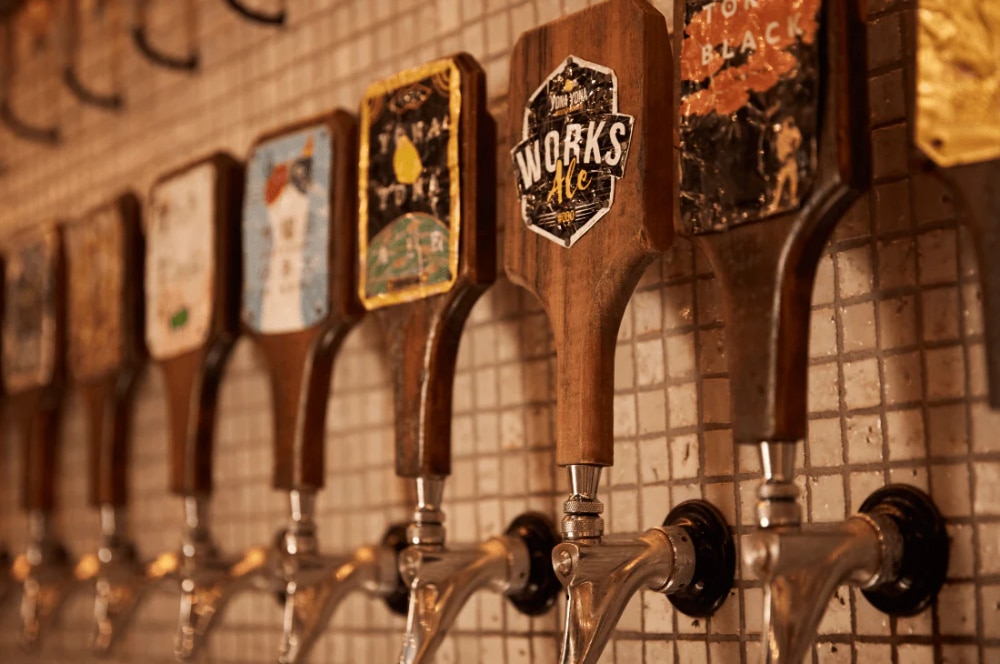Senbei: bite into the wonderful world of Japanese rice crackers!
Jul 21, 2023
BY Sarah Roach

Crispy, crunchy, can be savoury or sweet. What am I referring to? The Japanese Senbei that is! Brings back memories of 2018 where I made an awesome Japanese friend on campus, who then gave me Japanese snacks to enjoy before she headed back home. Among these snacks were rice crackers, which I have never heard of or tasted before, but piqued my interest. One bite into this snack, my entire family and I loved it!
Now fast forward to the present, I have the honour of writing this blog for you all about Senbei (煎餅), Japanese Rice Crackers, one of the three types of Beika (米菓- literally meaning rice snack). Let’s learn more, shall we?

Photo by Jelleke Vanooteghem on Unsplash
Origins of Senbei (煎餅)
A traditional snack that’s been around for centuries, it was first introduced to Japan during the Tang dynasty by the Chinese. Actually, the original version was said to be more cake-like in texture and sweet, and it wasn’t till the Edo Period (1603-1868) that senbei was popularised.
A famous theory states that a woman by the name of Osen created this snack when she rolled out her leftover dango and roasted it. Since then, Senbei has evolved over the decades, with even modern and regional varieties being created.

Photo credit: moshichubby on Instagram
How is it made?
Made using Joshinko (non-glutinous rice flour), it is then pounded to create a dough. Through kneading and steaming, the dough is used to create the round flat disks which are then roasted to give us the delectable crunchy snack.
You can find this practice common in the eastern Kanto region, however in the western Kansai area, making senbei uses glutinous rice instead.
This snack comes in all different shapes and sizes, but also in a variety of flavours. Let’s learn more!
Classic Senbei Flavours

Shoyu Senbei Photo credit: Chocominter on Instagram
Shoyu Senbei is the most common and classic senbei flavour you can find anywhere on the streets of Japan or even at your nearest Conbini. Shoyu, which translates to ‘soy sauce’, is a very popular condiment for the Japanese as they favour the unique taste of it. Shoyu is brushed over the Senbei as they are being roasted over an open flame, which imparts that deep, savoury, umami flavour.

Nori Senbei Photo credit: Angie @mywilsonshine on Instagram
Nori Senbei is another classic flavour that holds the essence of Japan’s umami flavour. Nori, known as the dried seaweed, can be wrapped around roasted rice crackers, giving it a sea-salty taste. At times, to give an enhanced flavour, you may find vendors mixing ao-nori (powdered seaweed) into the dough before it is toasted.

Togarashi Senbei – Photo credit: ZenPlus
Do you like spicy foods like I do? Spicy is one word you will never see removed from my vocabulary! Cheers to this next type of rice cracker known as Togarashi Senbei. After toasting the rice crackers, they are then thickly coated with red chilli pepper powder and flakes. For all spicy snack lovers out there, it is a very popular treat.

Kuro Goma Senbei – Photo credit: ZenPlus
In Asian culture, you would find that a nutty flavour is well-liked, from roasted nuts or roasted soybean powder. Black sesame has therefore taken the jump into becoming a well-liked flavour of Senbei, which is called Kuro Goma Senbei. Why not try a bite of this appealing and speckled surface rice cracker?

Kuromame Senbei – Photo credit: ZenPlus
Want a sweeter taste?
Soybeans have no doubt a special place in the heart of Asian cuisine, so it comes as no surprise of what’s in the next senbei known as Kuromame senbei. Black soybean senbei is much thicker as it facilitates the larger cooked beans in them, making it great for a filling picnic or excursion snack.

Photo credit: ZenPlus
If you would like a more sugar coated treat in every crunch, why not grab a pack of Zarame Senbei? Coated in zarame sugar; a type of Japanese coarse sugar, it gives this crunchy delicacy a perfect texture and sweetness for your enjoyment.

Photo credit: ZenPlus
Regional varieties
Curry and rice is a dish well loved by the Japanese for a great weeknight dinner, but did you know that there are other ways to enjoy curry flavour?
With Japan’s curry being milder and sweeter in flavour, after collaborating with a famous curry shop in Sapporo, Hokkaido, the delicious Kare (Curry) senbei was born. Toasted well with the rice cracker, this gives an explosion of well blended aromatics and spices. It may look different in its shape but still packs quite the punch!

Photo credit: ZenPlus
With a trip outside Metropolitan Tokyo, you can find yourself in Chiba prefecture where they sell senbei that’s not your usual crunchy snack. Known as Nure-senbei, it translates to “wet rice cracker”. It is dipped into soy sauce during the cooking process, creating a moist yet chewy cracker.

Photo credit: ZenPlus
Mentaiko (fish roe); a popular culinary ingredient in asian cuisine, originates in the northern shores of Japan’s Kyushu island; Fukuoka prefecture. Mentaiko (pollock roe) is mixed directly into the dough, as the flavour is toasted right in for a special salty but spicy umami flavour, which gives us Mentaiko senbei (spicy cod roe senbei).
Why not grab a bag on the go for your exciting, adventurer travels?
Seafood varieties
You would think by now this far into reading, you have read about it all. Then please let me blow your mind a little more (tee-hee!). Seafood is very common in Japan with prefectures closer to the shores having greater produce at the markets, so it is amazing we can find them in senbei as well.

Photo Credit: Italians in Japan on Instagram
Ebi senbei was created using Shrimp, a common ingredient found in Japanese seafood dishes, and can be finely minced into the senbei dough before toasting. This adds threads of red and pink throughout the cracker, being slightly thin, but deliciously chewy.
Don’t be surprised if you see a senbei with the imprint of a shrimp. Sometimes it can be cooked flat into the senbei and makes a strikingly odd appearance for this large cracker but still delicious!

Photo Credit: Italians in Japan on Instagram
You have always heard of Takoyaki, but have you heard of Tako senbei? Pieces of Octopus are pressed and baked flat into this crackly cracker. Makes a perfect snack on the go as you are sightseeing and enjoying the beauty of Japan!

Variety of Senbei at shop in Kamakura, Kanagawa – Photo courtesy daisuki nippon on IG
Senbei is therefore a delicious treat you can find almost anywhere if you would just like a crunchy snack to munch on. Look at the variety you can find at a store! With such an array of flavours and colours, but also coming in differing shapes, how many do you think you will be purchasing? (all?…lol maybe)
Which one excited you the most that you simply must try it? For myself, it’s between the Togarashi and the Curry senbei!

Photo by Alessio Ferretti on Unsplash
Wait! Hold up….I almost forgot to mention to you one more type of Senbei, but this isn’t one you’re allowed to eat. In fact, if you venture out to the foot of Mount Wakakusa, Nara city, find yourself in Nara Park and grab yourself some Shika senbei. Don’t eat it though! Not even a nibble.
Considered to be the symbol of the city, feed these senbei to the deers when you visit. They are absolutely cute and you get to brag to your friends of how you met the deers! (teehee)
Featured photo by Bokksu
Join our Asakusa Food tour in Tokyo to discover an authentic and unique senbei shop!
Book your pocket wifi now to stay connected through your entire Japan Journey!

Be sure to get the JR Pass to make navigating Japan during your trip that much easier!

YOU MIGHT ALSO LIKE




